How the zebra rock got its stripes, spots and spirals

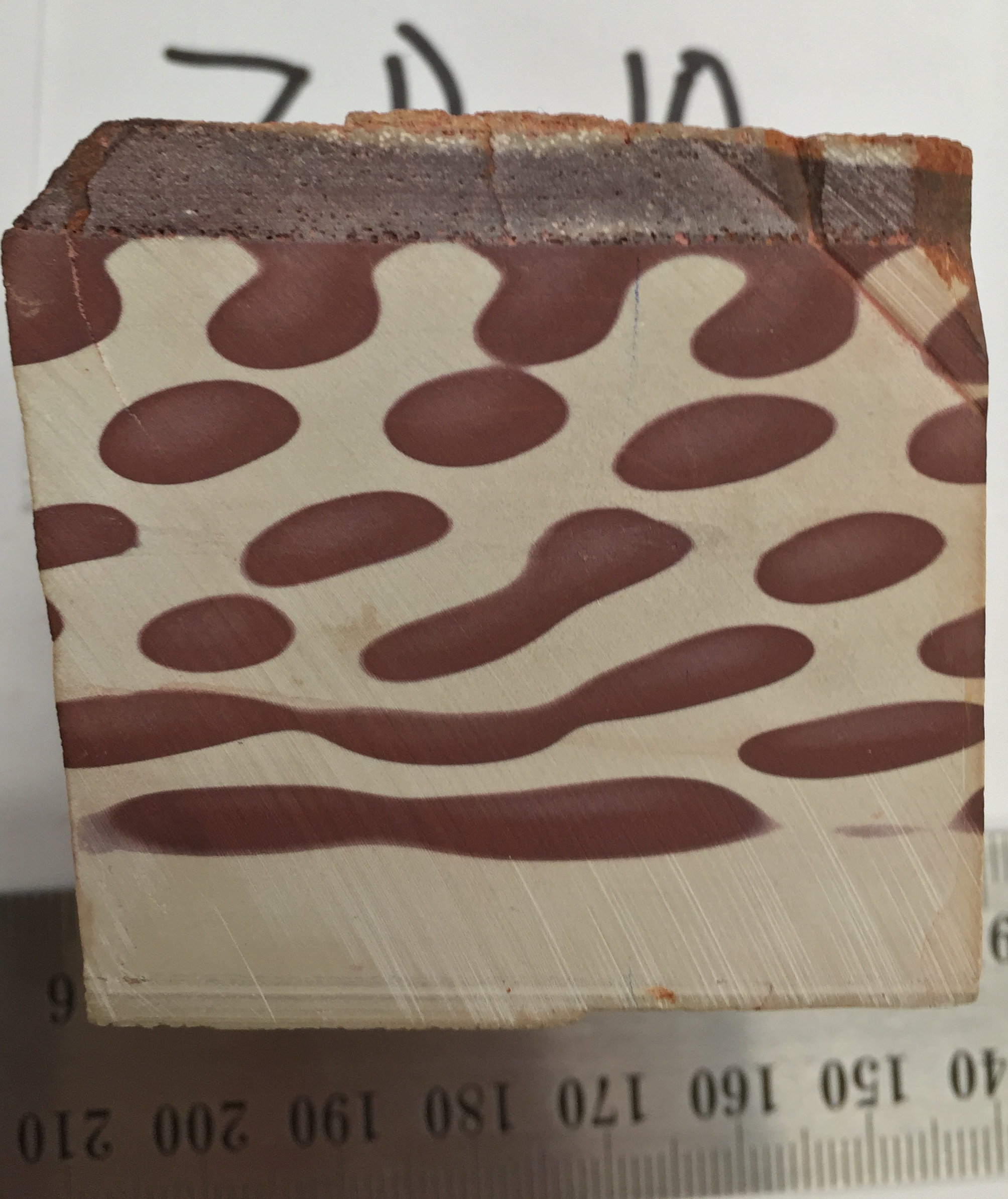
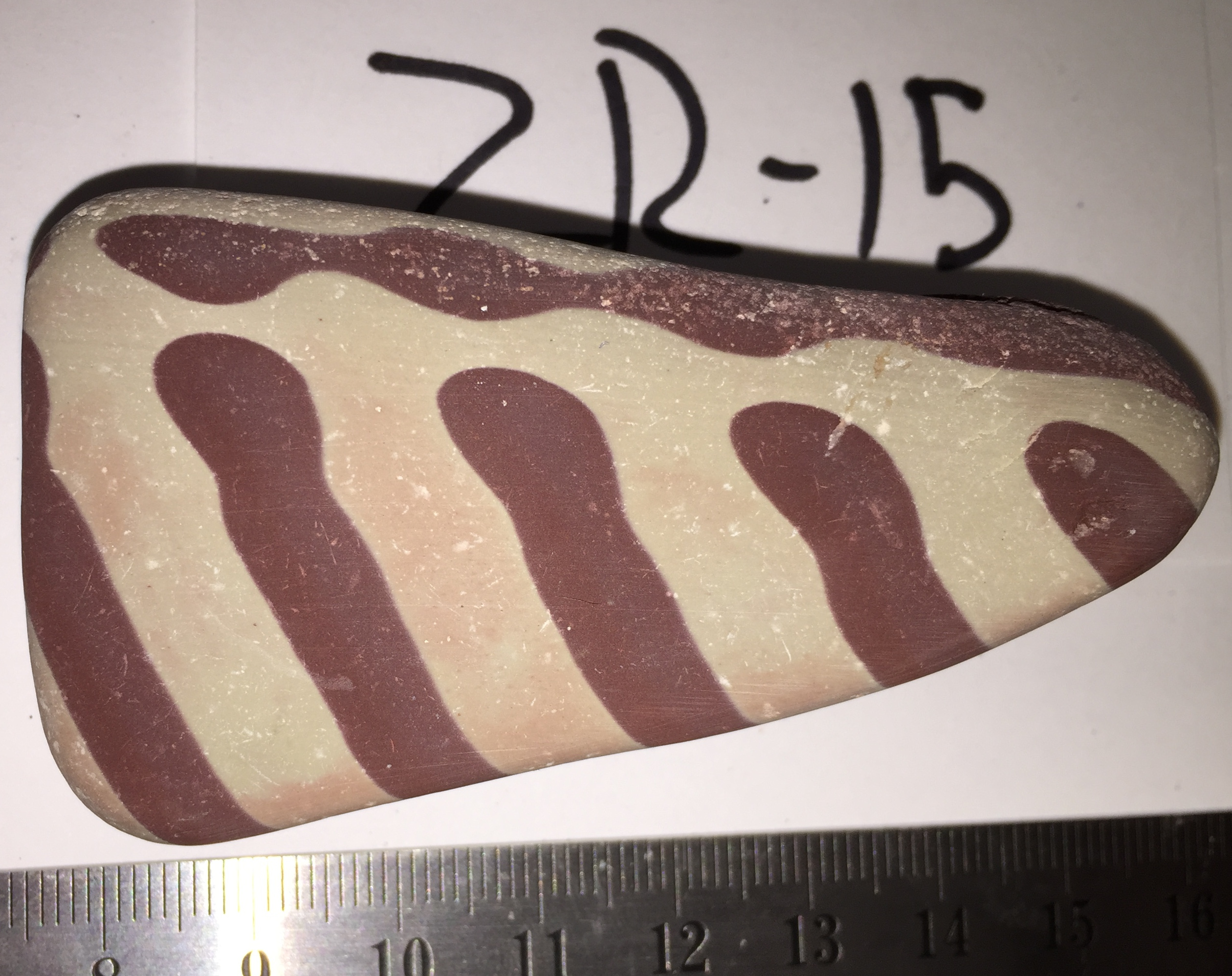
Zebra rocks are rare and distinctive sedimentary rocks with patterns of alternating reddish-brown and white stripes, spots and spirals. They are found only in the northwest of Australia. Many suggestions have been made as to their formation, from Liesegang rings and Turing instabilities to convection and flow instabilities of ferronematic liquid crystals. We are analysing rock samples from a variety of locations and developing mathematical models for the most plausible hypotheses.
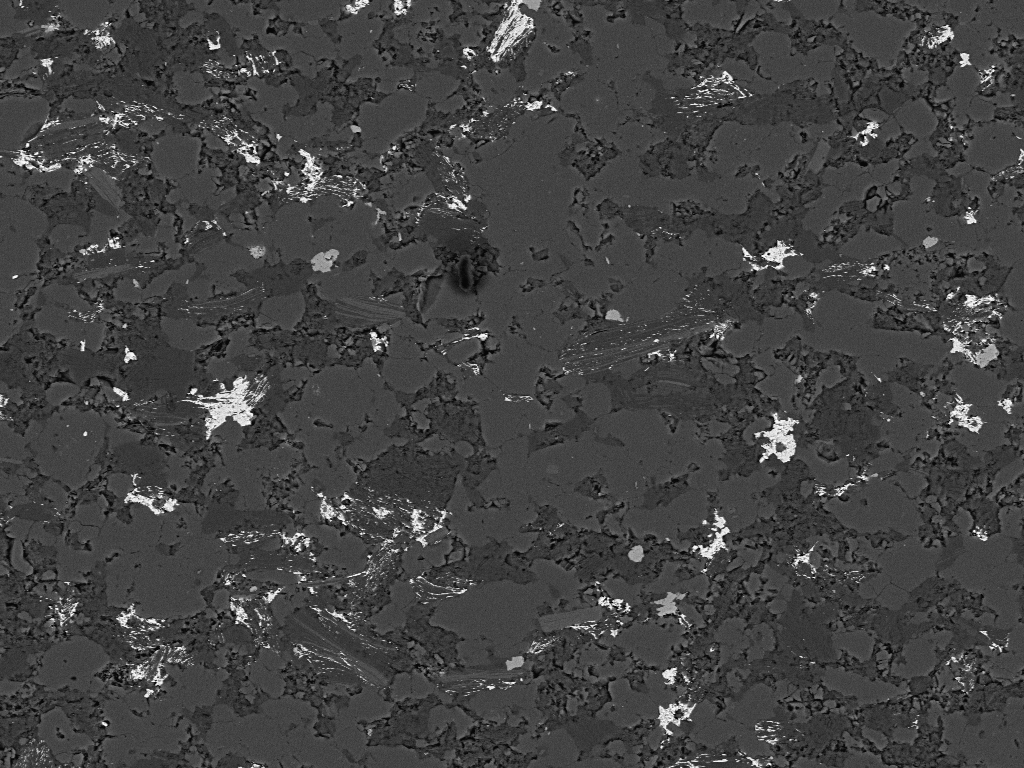
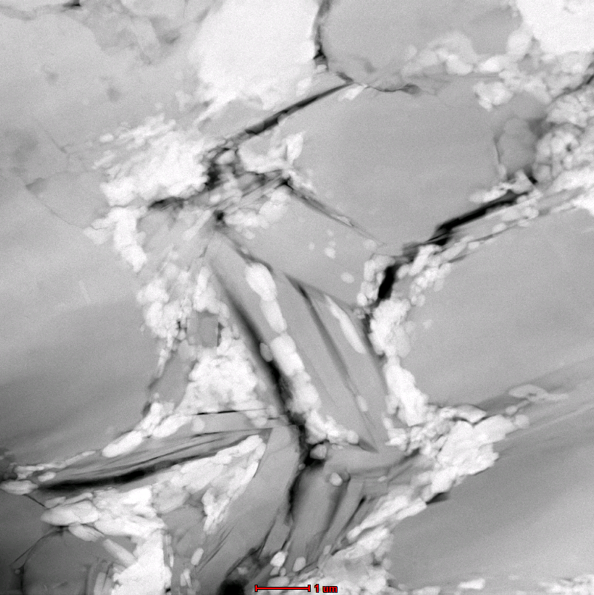
SEM (left) and TEM (centre) images of a brown region with white representing hematite crystals. Width of left image is about 300 microns and scale in centre image is 1 micron. Synchrotron x-ray CT sections (right) showing a dislocation propagating through the interior of the sample. Lighter colouring represent brown regions. Sample is approximately 4cm. Thanks to Sasha Wilson (SEM image), Tim Williams (TEM image) and Helen Brand (x-ray CT)!
Convection in porous media
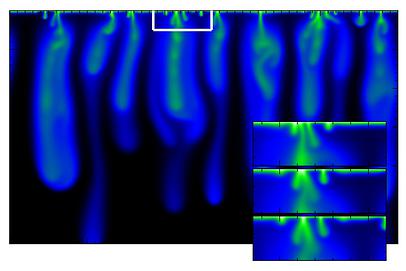 The idea behind Carbon Capture and Storage (CCS) is to take carbon dioxide from "point" sources such as power stations and cement works, purify it, compress it and pump it underground into porous, brine-filled rock for storage. There it is less dense than the brine and so rises until it reaches an impermeable, nearly horizontal barrier where it spreads out as a long, thin layer. Progressively it also dissolves in the brine. This is interesting because it (rather unusually) makes the brine more dense. With relatively dense fluid overlying relatively light, convection can begin, which enhances the rate of dissolution. I've worked on when this system is unstable, what the regimes of convection are and how quickly the carbon dioxide dissolves. I'm currently focussing on an intriguing regime in which the profiles of dissolved carbon dioxide, when horizontally averaged, appear self-similar and the typical horizontal wavelength of the convection increases at square-root of time. This is joint work with TS Ramakrishnan, Mahesh Bandi, Joel Miller, L Mahadevan and Shreyas Mandre.
The idea behind Carbon Capture and Storage (CCS) is to take carbon dioxide from "point" sources such as power stations and cement works, purify it, compress it and pump it underground into porous, brine-filled rock for storage. There it is less dense than the brine and so rises until it reaches an impermeable, nearly horizontal barrier where it spreads out as a long, thin layer. Progressively it also dissolves in the brine. This is interesting because it (rather unusually) makes the brine more dense. With relatively dense fluid overlying relatively light, convection can begin, which enhances the rate of dissolution. I've worked on when this system is unstable, what the regimes of convection are and how quickly the carbon dioxide dissolves. I'm currently focussing on an intriguing regime in which the profiles of dissolved carbon dioxide, when horizontally averaged, appear self-similar and the typical horizontal wavelength of the convection increases at square-root of time. This is joint work with TS Ramakrishnan, Mahesh Bandi, Joel Miller, L Mahadevan and Shreyas Mandre.
Gravity currents
 Gravity currents occur whenever fluid of one density flows predominantly horizontally into fluid of a different density. This density difference can arise from differences in composition (e.g., salinity) or from suspended, slowly sedimenting particle loads. Many examples exist from ash clouds and river plumes in nature to industrial problems such as the accidental release of dense, toxic gases. Together with Herbert Huppert, I have worked on a number of high Reynolds number gravity current problems:
Gravity currents occur whenever fluid of one density flows predominantly horizontally into fluid of a different density. This density difference can arise from differences in composition (e.g., salinity) or from suspended, slowly sedimenting particle loads. Many examples exist from ash clouds and river plumes in nature to industrial problems such as the accidental release of dense, toxic gases. Together with Herbert Huppert, I have worked on a number of high Reynolds number gravity current problems:
- How is the evolution of a gravity current modified by pre-existing flows in the ambient fluid? This knowledge is particularly important for hazard mitigation in industrial accidents, but is also relevant for natural flows such as river plumes (which are strongly influenced by marine currents) and thunderstorms (cold air spreading at the base generates updraughts particularly at upwind fronts; these are thought to sustain the cloud).
- How do volcanic ash clouds evolve? During the early hours of an eruption, ash clouds intrude into the atmosphere at their level of neutral buoyancy as gravity currents. We have developed a model for the evolution of clouds during this phase. One particularly interesting prediction is the formation of bilobate ash deposits: such deposits exist from a number of eruptions and have maximum depth at the edges for a given distance from the vent. Generally either a change in wind direction or bifurcation of the eruption column is assumed responsible, however our description suggests they may simply be an inevitable outcome of buoyancy-driven spreading.
- What are the final stages of collapse as gravity currents fill an internal hole?
Viscoplastic flows
 Many fluids, from lava to chocolate, exhibit a yield stress behaviour: applied stresses must exceed a threshold value before the material begins to flow. In industry, the final shape of a collapsing fluid volume is often used to infer the yield stress and in nature, the existence of a yield stress may contribute to the shape of lava domes. I've worked on ways to determine rheological properties of such fluids. This was joint work with Neville Dubash, Neil Balmforth and Steve Cochard.
Many fluids, from lava to chocolate, exhibit a yield stress behaviour: applied stresses must exceed a threshold value before the material begins to flow. In industry, the final shape of a collapsing fluid volume is often used to infer the yield stress and in nature, the existence of a yield stress may contribute to the shape of lava domes. I've worked on ways to determine rheological properties of such fluids. This was joint work with Neville Dubash, Neil Balmforth and Steve Cochard.
Buckling
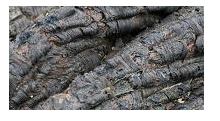 Buckling of thin structures occurs whenever applied forces exceed a threshold value. The classical example is failure of a beam in compression, however shear and tension, body forces or interaction with an external fluid can also cause buckling. Together with Neil Balmforth and Richard Craster, I have studied onset and nonlinear growth of shear- and gravity-induced buckles in a thin elastic plate. Onset was first studied in the early 20th century, however weakly nonlinear analysis and numerical techniques allowed us to investigate behaviour above onset. We showed that the bifurcation is always subcritical and find rich, hysteretic behaviour.
Buckling of thin structures occurs whenever applied forces exceed a threshold value. The classical example is failure of a beam in compression, however shear and tension, body forces or interaction with an external fluid can also cause buckling. Together with Neil Balmforth and Richard Craster, I have studied onset and nonlinear growth of shear- and gravity-induced buckles in a thin elastic plate. Onset was first studied in the early 20th century, however weakly nonlinear analysis and numerical techniques allowed us to investigate behaviour above onset. We showed that the bifurcation is always subcritical and find rich, hysteretic behaviour.
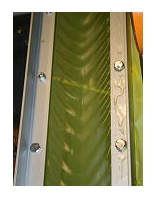 Thin layers of very viscous fluids can also buckle in a manner similar to elastic sheets. Here stability under simple shear has long presented a conundrum: the viscous analogue of the elastic plate equations are derived by a long-wave approximation and yet predict infinitesimally short waves, while a short-wave approximation predicts arbitrarily long waves. We showed that relatively long wave modes are most unstable just above onset, but the viscous plate model is significantly improved by a non-asymptotic inclusion of advective terms. This was joint work with Jeremy Teichman and L. Mahadevan.
Occasionally fluids develop a thin, rheologically distinct skin at their surface, for example the thin skins formed on hot milk or wax, or the surface crust formed on cooling lava flows. If the underlying fluid is flowing, then stress-induced buckling can deform the skin (as observed in the corrugated appearance of ropy pahoehoe lava flows). Such folds are traditionally thought to occur by compression whenever the underlying fluid is slowed down, however we showed that it can also occur through shear such as at the edges of channelized lava flows. This was joint work with Joel Miller, Neil Balmforth and Richard Craster.
Thin layers of very viscous fluids can also buckle in a manner similar to elastic sheets. Here stability under simple shear has long presented a conundrum: the viscous analogue of the elastic plate equations are derived by a long-wave approximation and yet predict infinitesimally short waves, while a short-wave approximation predicts arbitrarily long waves. We showed that relatively long wave modes are most unstable just above onset, but the viscous plate model is significantly improved by a non-asymptotic inclusion of advective terms. This was joint work with Jeremy Teichman and L. Mahadevan.
Occasionally fluids develop a thin, rheologically distinct skin at their surface, for example the thin skins formed on hot milk or wax, or the surface crust formed on cooling lava flows. If the underlying fluid is flowing, then stress-induced buckling can deform the skin (as observed in the corrugated appearance of ropy pahoehoe lava flows). Such folds are traditionally thought to occur by compression whenever the underlying fluid is slowed down, however we showed that it can also occur through shear such as at the edges of channelized lava flows. This was joint work with Joel Miller, Neil Balmforth and Richard Craster.
Useful links: School of Mathematical Sciences | School of Earth, Atmosphere and Environment
